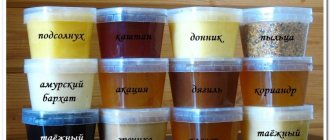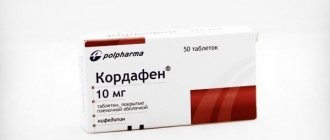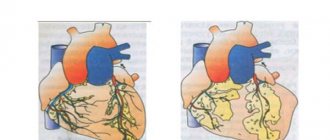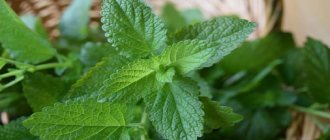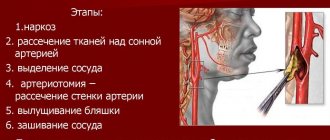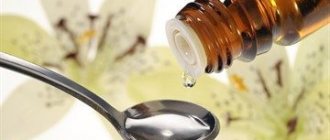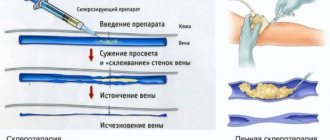The action of the renin inhibitor aliskiren (trade name Rasilez) is aimed at lowering blood pressure. It stops the chain of angiotensin conversion and promotes dilation of arteries. Prescribed to patients with hypertension, it gives a lasting effect. May be recommended for concomitant diabetes mellitus, obesity and nephropathy.
Mechanism of action of a renin inhibitor
When the volume of circulating blood decreases or its flow into the renal arteries is insufficient (spasm, atherosclerosis), renin begins to be produced in the kidneys. It triggers a chain of biochemical reactions of sequential transformation - angiotensinogen-angiotensin 1-angiotensin 2. It is the last peptide that is a strong vasoconstrictor, which:
- provokes the release of adrenaline, norepinephrine and dopamine by the adrenal glands;
- promotes the release of catecholamines from nerve endings;
- increases the formation of aldosterone (retains sodium and water);
- activates the synthesis of substances that enhance the inflammatory response and the processes of replacement of functioning cells with connective tissue (fibrosis and sclerosis).
As a result of all these actions, blood pressure levels increase. Aliskiren (a direct renin inhibitor) has a very important feature that distinguishes it from ACE inhibitors and angiotensin receptor blockers.
With a decrease in the amount of angiotensin 2, the kidneys increase the formation of renin through a feedback mechanism. Rasilez inhibits the activity of renin, breaking this vicious circle, which leads to a significant reduction in the risk of acute circulatory disorders.
We recommend reading about medications for the treatment of hypertension. You will learn about the dangers of high blood pressure, the classification of medications for hypertension, as well as combination therapy. And here is more information about ACE inhibitors.
Renin inhibitors in combinations
25
Editorial staff of MedVisoryesterday at 17:17
The coronavirus infection, which originated in China, is spreading alarm throughout the world. Although the new virus has spared one vulnerable group - children - it appears to pose a particular threat to middle-aged and older people, especially men. So who gets sick with coronavirus more often - men or women?
Lungs ENTHarms of smokingImmunityChinese pneumonia
11
MedVisors editors today at 15:55
As the coronavirus continues to spread around the world, there are many myths and untruths surrounding this topic. The World Health Organization (WHO) officially announced its classification of the situation on March 11, moving from an emergency to a pandemic of international concern. As always, when the word “pandemic” appears in the news headlines, people become afraid. And with...
LungsENTHygieneInfectionsElderly Health
13
Erica Hersh, Meredith Goodwin, MD, HealthLine.comtoday at 01:19
The SARS-CoV-2 coronavirus is highly contagious, and is especially dangerous due to its long incubation period
LungsVirusesPneumoniaInfectionsChinese Pneumonia
25
Sherin Lehman, reviewer Richard Fogoros, MD, VeryWellFit.comyesterday at 08:43
The energy density of foods is the amount of energy in calories contained in the specific gravity of food. Accordingly, the higher the density, the higher the number of calories per serving.
StomachDietCaloriesNutritionWeight Loss
22
Michelle Fisk, lifetrong.comMarch 27
You can't get enough of anything healthy, especially when it comes to vitamins. Some simply will not be absorbed, but others will even cause harm. An overdose of retinol, or vitamin A, is just such a case. Not to say that this is too common, but you still need to be more careful with this substance
IntestinesVitaminsMedicinesComplicationsPoisoning
9
Debra Rose Wilson, www.medicalnewstoday.comMarch 26
Castor oil is a vegetable oil obtained from the beans of the castor tree. It contains fatty acids that are extremely nourishing for the skin. Therefore, it is used to increase the thickness of eyelashes and eyebrows. Does castor oil really help eyelashes? Let's look at it in the article.
15
Kimberly Holland and Valencia Higuera Reviewer Elaine K. Luo, MD HealthLine.com March 26
Every spring and fall, you get a consistent cold or flu. The slightest sore and you are in bed with a high fever. Sound familiar? Most likely you have problems with your immune system. Let's figure out why people constantly get colds
ENTBacteriaVirusFluInfections
19
Cynthia Cobb, www.healthline.comMarch 25
If you feel like a tired look has become your everyday companion, then the solution to the problem may be in the hands of cosmetologists. Fillers for the eye area are no longer something new or unavailable. However, the issue of injections must be taken seriously.
SkinBeautyComplicationsDrugs
19
MedVisor Editorial March 25
The COVID-2019 pandemic has already given rise to a lot of ridiculous myths. One of them is now actively walking on social networks and says that smoking helps to avoid coronavirus. In fact, everything is exactly the opposite: smokers are in the main risk group! Especially those who have used tobacco all their lives
Lungs ENTHarms of SmokingBad HabitsImmunity
5
Natalie Olsen, www.medicalnewstoday.com24 March
Whether baked, fried, boiled or steamed, potatoes are one of the most popular foods in the human diet. It is rich in potassium and B vitamins, and its skin is an excellent source of fiber. However, if you have diabetes, there are many assumptions about what you should and shouldn't eat. Can you eat potatoes if you have diabetes? Let's look into this issue.
Glycemic indexDiabetesInsulinNutritionFood
If you have chest pain, the first thing that comes to mind is a heart attack. Of course, any chest pain cannot be ignored, but it can have many causes.
ChestStomachLungsPancreasHeart
21
Anne Pietrangelo, Reviewers University of Illinois at Chicago College of Medicine, HealthLine.com March 24
A blood coagulogram is a comprehensive test that evaluates the ability of your blood to form clots (thrombi). The results help the doctor assess the risk of excessive bleeding or, conversely, thrombosis.
LiverVesselsBlood TestTestsProcedures
18
Amy Tenderich, www.healthline.com March 23
The global threat of coronavirus is growing every day, with news of new cases and deaths, stay-at-home recommendations and potential economic impacts. The media continues to report that people with chronic illnesses are at particularly high risk of infection. Unfortunately, coronavirus and diabetes go hand in hand.
HygieneDiabetesImmunityChinese pneumoniaCoronavirus
Coronavirus infection COVID-2019 is a new disease and doctors do not fully understand how severely it affects health. There are known cases of infection and successful recovery from the new virus during pregnancy. But is coronavirus dangerous for pregnant women?
PelvisPregnancyMiscarriageFluInfections
7
MedVisor Editorial March 21
It is now known that the new coronavirus can remain viable on various surfaces for several days.
On the other hand, there are no documented cases of contracting COVID-19 infection from objects or surfaces. Transmission of coronavirus occurs much more often through airborne droplets.
And yet, as a preventative measure, it is worth maintaining hygiene in the workplace and other public...
HygieneImmunityChinese pneumoniaCoronavirus
17
Cecilia Snyder, www.healthline.comMarch 22
Fresh meat spoils quickly, and freezing it is a common method of preservation. Low temperatures help avoid the development of parasites and diseases associated with them (toxoplasmosis). However, you may be wondering, can you refreeze meat?
11
MedVisor Editorial March 20
Uric acid is a chemical that the body produces when it breaks down food. Most of this acid dissolves in the blood, is filtered in the kidneys and excreted in the urine. What does a uric acid test show and how to take it? Explanation below.
JointsBlood testUrine testTestsArthritis
5
George Citroner, Reviewer Michael Crescione, HealthLine.com March 22
Viruses love it when you touch your face and get into your eyes - mucosal cells are the best breeding ground for their reproduction. Here's why you shouldn't touch your face with your hands during the coronavirus epidemic
LungsDiseaseVirusFluInfections
8
James Shand, reviewer Katherine Marengo, LDN, HealthLine.com March 21
Eating healthy and natural food is the best way to maintain your health during seasonal epidemics of ARVI and influenza. Today we’ll tell you which foods boost immunity and why.
StomachIntestinesDiseaseFluDiet
7
MedVisor Editorial March 20
A pregnant woman, from the moment of registration until birth, needs to be regularly observed by a doctor and undergo examination. Tests begin already in the first trimester of pregnancy. We'll tell you which ones and why.
PelvisBlood testUrine testTestsPregnancy
Source: https://medvisor.ru/medicine/farm-group/organotropnye-sredstva/serdechno-sosudistye/ingibitory-renina/v-kombinatsiyakh/
How does a direct renin inhibitor help with hypertension?
It has been proven that Rasilez provides a decrease in systolic and diastolic blood pressure levels throughout the day, including at a dangerous time for vascular accidents - the early morning hours. After 10 - 15 days, almost all patients experience a hypotensive reaction, and normal values of hemodynamic parameters are restored. This effect does not change throughout the year, subject to regular use.
After discontinuation of the drug, the pressure increases smoothly over 4 - 6 weeks to the initial values without sudden jumps and an increase in renin activity. A month after stopping treatment, the levels are still reduced.
The first dose of Rasilez does not cause an excessive drop in pressure and an increase in pulse rate in response to the dilation of the arteries. The drug is used both for monotherapy and in combination with ACE inhibitors, angiotensin receptor blockers, calcium channel blockers, and diuretics.
Pharmacokinetic and pharmacodynamic effects of aliskiren
Aliskiren has favorable physicochemical properties, including high solubility (> 350 mg/ml at pH = 7.4) and hydrophilicity, which significantly improves the bioavailability of the drug [79]. Under experimental conditions, it was found that after taking the first dose, peak plasma concentration is reached after 1–2 hours, bioavailability is within 16.3%, and the half-life is 2.3 hours [79]. In healthy volunteers, the pharmacokinetic properties of the drug were assessed in a dose range from 40 to 1800 mg/day. [4]. It turned out that the plasma concentration of aliskiren increases progressively after taking ranged doses of 40–640 mg/day, reaching a maximum after 3–6 hours. The average half-life is 23.7 hours. Moreover, the stability of the plasma content of aliskiren is observed after 5–8 days of continuous use [45]. In addition, researchers noted the drug’s ability to moderately accumulate when used in high doses, as well as the presence of a direct dependence of the level of bioavailability on food intake [4]. It should be noted that the pharmacokinetic characteristics of aliskiren do not depend on fasting glycemia and plasma concentration of glycosylated hemoglobin [81]. In addition, the drug has a comparable kinetic profile in representatives of different races and ethnic groups [69]. Aliskiren binds moderately to plasma proteins, and the intensity of this interaction does not depend on its plasma concentration [4]. Elimination of the drug occurs unchanged in the bile, excretion in urine is less than 1% [16]. The peculiarities of the drug are low competition with other drugs for binding to blood plasma proteins and the absence of the need for degradation on cytochromes of the P450 system. Aliskiren over a wide range of doses does not have a clinically significant effect on the metabolism of warfarin, lovastatin, atenolol, celecoxib, cimetidine and digoxin [17–19]. In addition, the drug at a daily dose of 300 mg orally does not change the pharmacokinetic profile of other antihypertensive drugs, such as ramipril (10 mg/day), amlodipine (10 mg/day), valsartan (320 mg/day), hydrochlorothiazide (25 mg/day). days) [70].
Aliskiren is a highly selective non-peptide inhibitor of renin synthesis, superior in this regard to other representatives of this class [37, 40, 50]. The drug does not have an additional inhibitory effect on other aspartate peptidases, such as cathepsin D and pepsin, either in experimental or clinical settings [79]. Moreover, aliskiren leads to a significant blockade of renin secretion even in relatively low doses and with limited bioavailability [25, 26].
Early phase 1 and 2 studies showed that the drug provides effective blockade of the RAS and a dose-dependent reduction in systemic blood pressure [45]. Thus, in healthy volunteers, the drug, when administered once compared to placebo, leads to an almost 80% reduction in the initial concentration of angiotensin II, although the plasma renin content decreases more than tenfold. Increasing the observation time from one to eight days while continuing constant administration of aliskiren contributed to the maintenance of deep blockade of the RAS due to a reduction in the plasma pool of angiotensin II by 75% of the initial level. At a dose of 160 mg/day, aliskiren has the same depressant effect on the plasma concentration of angiotensin II as the ACE inhibitor enalapril at a dose of 20 mg/day. In addition, at a dose of more than 80 mg/day, the drug promotes a significant regression of plasma aldosterone levels (Nussberger et al., 2002).
In a cohort of patients with hypertension, over four weeks of therapy, aliskiren at a dose of 75 mg/day led to a reduction in plasma renin activity (PAR) by 34 ± 7% of the initial level; after increasing the dose to 150 mg/day, the drug contributed to a decrease in PAR by 27 ± 6% to the outcome of the eighth week of continuous use [78]. It should be noted that the initial significant decrease in plasma renin activity is accompanied by a gradual increase that does not reach the initial level. It is important that this phenomenon is not accompanied by a loss of the antihypertensive effect of the drug [45, 78]. Nevertheless, the possibility of the phenomenon of “escaping” renin secretion from the influence of aliskiren has led to the need to continue research in the direction of assessing the prospects for the effectiveness of the combination of PIR and ARA, which are also capable of reducing plasma renin activity. Thus, in a small pilot crossover study, it was found that aliskiren at a dose of 300 mg/day was superior to valsartan at a dose of 160 mg/day in terms of reducing plasma renin activity. However, the combination of aliskiren and valsartan in half daily doses turned out to be preferable compared to the isolated use of each drug in terms of its ability to block RAS activity. This was reflected in a deeper decrease not only in PAR, but also in the levels of angiotensin II and angiotensin II. The researchers came to the conclusion that the effect of both drugs on the activity of the RAS is synergistic [3]. Similar data were obtained by O'Brien et al. (2007) when using aliskiren (150 mg/day) in combination with hydrochlorothiazide, ramipril or irbesartan in patients with mild and moderate hypertension [46]. It turned out that aliskiren contributed to a significant reduction in PAR by 65% (p < 0.0001) from the initial level, while ramipril and irbesartan in monotherapy led to a 90% and 175% reduction in PAR, respectively. The addition of aliskiren to antihypertensive drugs did not result in an additional reduction in PAR, but led to more effective control of office BP and the 24-hour BP profile [46].
Thus, aliskiren is capable of quite serious blockade of the RAS, which is accompanied by the expected clinical effects in the form of a reduction in vascular tone and a decrease in systemic blood pressure. However, the drug is not without fundamentally negative qualities, primarily associated with the implementation of the phenomenon of PAR “escape,” which is, in principle, characteristic of all drugs that mediate their pharmacodynamic effect through chronic blockade of the RAS [31]. It has been established that theoretical concerns regarding a decrease in the effectiveness of aliskiren due to restoration of renin secretion or the presence of a withdrawal syndrome after sudden cessation of treatment are not confirmed by clinical observations [28, 55].
Indications for use of Rasilez
The drug is recommended for hypertension and symptomatic arterial hypertension. It allows you to achieve the recommended level of blood pressure with concomitant diabetes mellitus without the risk of increasing blood glucose levels. The magnitude of the hypotensive effect does not depend on the patient’s body weight, age, or gender.
Rasilez is well tolerated in chronic heart failure and metabolic syndrome. When treating patients with diabetes mellitus complicated by nephropathy, a decrease in protein loss in urine was noted.
Latest generation blood pressure medications
Most of the representatives of the above list are available in the form of tablets for oral use. The only exception is one beta blocker - Labetalol, which comes on the shelves in the form of a powder or solution for intravenous administration. There are other medications produced in the form of injections (for example, sodium nitroprusside, nitrates), but they do not belong to the category of modern drugs and are used exclusively to eliminate a hypertensive crisis.
Modern medications for blood pressure in tablets will help get rid of not only changes in blood pressure, but also improve the functioning of the cardiovascular system, central nervous system and kidneys. Other advantages that new medications have:
- Unlike systemic drugs, modern hypertension pills can reduce left ventricular hypertrophy.
- They have a selective effect on the body, due to which they are well tolerated by older people.
- They do not reduce the performance and sexual activity of patients.
- They are gentle on the nervous system. Many products contain benzodiazepine, which helps fight depression, stress, and nervous disorders.
Calcium channel blockers
Calcigard retard is a new medicine for hypertension with a slow release of the active substance. The drug has high lipophilicity, due to which it has a long-lasting effect. The active component of the tablets is nifedipine. Auxiliary components – starch, magnesium stearate, sodium lauryl sulfate, polyethylene glycol, stearic acid.
Calcigard retard acts very gently, due to which it can be used for the permanent treatment of hypertension, stable angina, and Raynaud's disease. The pharmacological properties of the tablets include slow vasodilation, due to which Calcigard has fewer side effects than pure Nifedipine. Negative reactions may include:
- tachycardia;
- peripheral edema;
- headache;
- dizziness;
- drowsiness;
- nausea;
- constipation;
- allergic reaction;
- myalgia;
- hyperglycemia.
Calcigard retard is taken orally during or after meals, the average dose is 1 tablet 2 times a day. This medicine is prescribed with caution during pregnancy. Treatment with tablets is strictly prohibited for:
- hypersensitivity to nifedipine;
- arterial hypotension;
- collapse;
- unstable angina;
- severe heart failure;
- acute stage of myocardial infarction;
- severe aortic stenosis.
Angiotensin-converting enzyme inhibitors
A prominent representative of this group is the drug Diroton. The new generation medicine for hypertension is suitable even for the treatment of patients in whom high blood pressure is combined with liver diseases; the drug has a minimum of contraindications and side effects. The active ingredient of Diroton is lisinopril. Auxiliary components – magnesium stearate, talc, corn starch, calcium hydrogen phosphate dihydrate, mannitol.
The product has a prolonged effect, so it must be taken once a day in the morning before or after meals. The main indications for use are:
- arterial hypertension (for monotherapy or combination treatment);
- chronic heart failure;
- acute myocardial infarction;
- nephropathy due to diabetes.
With caution, Diroton is combined with potassium-containing diuretics and salt substitutes. Categorical contraindications: history of angioedema, age under 18 years, hypersensitivity to the components of the tablets, hereditary angioedema. Side effects may include:
- dizziness;
- headache;
- weakness;
- diarrhea;
- nausea with vomiting;
- hypotension;
- chest pain;
- skin rash.
Beta blockers
One of the representatives of this group is the modern new generation blood pressure medicine Labetalol. The medication is a hybrid blocker that simultaneously affects beta and alpha receptors. Labetalol is used for the permanent treatment of hypertension, pheochromocytomas, preeclampsia and for the relief of hypertensive crisis. Unlike selective drugs of the new generation, it provides an immediate antihypertensive effect. The dosage method and duration of treatment are selected individually. The average dosage is 100 mg 2-3 times a day with meals.
Among the new generation of selective action medications for hypertension, Nebivolol can be distinguished separately. Available in the form of tablets coated with a soluble coating. In addition to the antihypertensive effect, the medication has vasodilating properties due to increased production of nitric oxide in the walls of blood vessels. Nebivolol is taken orally 5 mg once daily, regardless of meals. The drug does not increase glucose and lipid levels and has virtually no effect on heart rate.
All beta blockers are prescribed with caution to patients with diabetes mellitus, myasthenia gravis, bradycardia, and low blood pressure. Categorical contraindications are bronchial asthma, obstructive pulmonary diseases, severe obliterating diseases of the blood arteries, unstable heart failure, atrioventricular block of 2 and 3 degrees. Side effects may include:
- headache;
- insomnia (as a result of insufficient melatonin production);
- erectile disfunction;
- bronchospasm;
- dyspeptic symptoms;
- increased fatigue;
- swelling.
Angiotensin 2 receptor blockers
Edarbi is a typical representative of the Sartan group. The drug is produced in the form of round tablets of white or almost white color. The active component is azilsartan medoxomil potassium. As auxiliary components, the medicine contains: mannitol, sodium hydroxide, hyprolose, microcrystalline cellulose, fumaric acid, magnesium stearate.
The antihypertensive effect of azilsartan develops during the first days, reaching its highest degree of therapeutic effect 30 days after the start of treatment. A decrease in blood pressure occurs several hours after ingestion of a single dose and persists throughout the day. The tablets can be taken at any time of the day, even on an empty stomach. The recommended starting dosage is 40 mg.
The drug is prescribed with caution for arrhythmia, severe chronic cardiac, hepatic or renal failure, for bilateral renal artery stenosis, and for patients over 75 years of age. Absolute contraindications include:
- pregnancy;
- individual intolerance to components;
- age under 18 years;
- diabetes;
- severe liver dysfunction.
Edarbi is prescribed for the treatment of essential hypertension. The drug is well tolerated by patients, but in rare cases side effects may occur:
- cardiopalmus;
- dizziness;
- diarrhea;
- rash;
- increased fatigue;
- swelling of soft tissues;
- pronounced decrease in blood pressure;
- increased creatine kinase activity;
- angioedema.
Direct renin inhibitors
Aliskiren is a little-known new generation medicine for hypertension. The drug is a selective renin inhibitor with pronounced activity. Aliskiren suppresses the interaction of renin with angiotensinogen of the first and second groups, due to which a decrease in blood pressure is observed. The drug is never used for monotherapy, but only as a maintenance agent in the treatment of severe hypertension.
Aliskiren is prescribed with caution for renal artery stenosis, diabetes mellitus, and after kidney transplantation. It is strictly forbidden to use this new generation medicine for people with hypersensitivity to the composition, with severe liver failure, with nephrotic syndrome, pregnancy or lactation, and children under 18 years of age. The list of side effects includes:
- dry cough;
- skin rash;
- diarrhea;
- increased potassium levels;
- headache.
Dosage regimen
The drug is prescribed for independent therapy; it is also included in complex treatment to enhance the hypotensive effect of other medications. The tablets are taken once a day, initially 150 mg, then after 2 weeks of use if the result is unsatisfactory, the dose is increased to 300 mg per day. Eating does not affect the absorption of Rasilez. It is advisable to use the medicine at the same time every day.
For elderly people and with impaired liver and kidney function (mild to moderate), no dose adjustment is required.
Cochrane
Review Question
We examined the effects of beta blockers (BBs), mineralocorticoid receptor antagonists (MRAs), angiotensin-converting enzyme inhibitors (ACEIs), angiotensin receptor blockers (ARBs), and angiotensin receptor and neprilysin inhibitors (ARNIs) on survival, hospitalization for heart failure, Quality of life and potassium levels in patients with heart failure with preserved ejection fraction.
Relevance
Heart failure is a common condition that occurs when the heart muscle fails to function and is associated with symptoms of shortness of breath and fatigue, as well as decreased survival. In about half of cases where contractility is reduced (heart failure with reduced ejection fraction, HFrEF), certain treatments are known to be effective in improving survival and reducing hospitalization. In other cases where relaxation is impaired (heart failure with preserved ejection fraction, HFpEF), it is unclear whether the same medications are effective in improving outcomes.
Selection criteria
We sought to determine whether treatments for HFrEF are equally effective in HFpEF. We conducted a comprehensive search of all studies related to BB, MRA, ACEI, ARB or ARNI studies (evidence up to 25 July 2020).
Results and conclusions
We included 10 studies with 3087 randomized participants for BBs, 12 studies with 4408 randomized participants for MRAs, 8 studies with 2061 randomized participants for ACEIs, and 8 studies with 8755 randomized participants for ARBs. We combined the data into a single analysis for each drug class and each outcome assessed. Not all included studies are part of every analysis.
We found that beta blockers may improve cardiovascular mortality, but the quality of the evidence was low due to the small size of the trials and uncertainty about the methods used. For AMR, results suggested a reduction in hospitalization for heart failure and little or no effect on cardiovascular and all-cause mortality, but the quality of the evidence was only moderate. Treatment with ACEIs appears to have little or no effect on outcomes such as cardiovascular mortality, all-cause mortality, and hospitalization for heart failure, but the quality of the evidence was only moderate. We found high-quality evidence for ARB treatment, and the findings suggest little or no effect for this treatment. There were no completed studies on ARNI. Treatment with MRAs and ARBs has been found to increase the risk of high blood potassium levels.
In conclusion, beta-blockers may improve outcomes in patients with HFpEF, but this remains uncertain. It was found that the use of MRA leads to a slight reduction in the risk of hospitalization due to heart failure. Treatment with ACEIs probably has no effect, but this remains uncertain. Available evidence suggests that ARB treatment provides little or no benefit to people with HFpEF.
Quality of evidence
The quality of the evidence ranged from high to low for all outcomes and drug classes examined. With the exception of ARB trials, there have been no large-scale trials testing interventions and outcomes in HFpEF.
Contraindications
The use of Rasilez is not recommended in case of established intolerance to the components of the tablets or severe renal and liver failure. It is prescribed with caution to patients with the following diagnoses:
- nephrotic syndrome;
- narrowing of one or two arteries of the kidneys;
- atherosclerosis of renal vessels;
- decompensated diabetes mellitus;
- decreased circulating blood volume and sodium content;
- increased blood potassium concentration;
- kidney failure requiring regular hemodialysis.
There is no data on the safety of use for stenosis of the artery of a single kidney, after kidney transplantation, in children and adolescents under 18 years of age.
Are renin-angiotensin system inhibitors dangerous during pregnancy?
It has been established that the use of drugs acting on the renin-angiotensin-aldosterone system by pregnant women leads to impaired fetal development and serious condition of newborns. This increases the risk of pathologies that can cause their death. In this regard, when prescribing the drug during childbearing years, patients should be informed of the need for reliable contraception during the period of therapy.
If pregnancy does occur, the drug should be discontinued immediately. Due to insufficient data on the penetration of aliskiren into breast milk, it is considered contraindicated during lactation.
Adverse reactions
One of the advantages of Rasilez is its good tolerability and relative safety. Most often, patients experience skin rash, itching and diarrhea. The hemoglobin content decreases slightly and the blood potassium level increases. These conditions are mild and do not require additional treatment or drug withdrawal. During long-term therapy, no changes in carbohydrate or lipid metabolism or uric acid levels were detected.
Cost of renin inhibitor and analogue drugs
Rasilez is produced by Novartis Pharma (Switzerland) in tablets of 150 and 300 mg. The package may contain 14 or 28 pieces. According to the data provided, the average cost of a medicine is:
- tablets 150 mg No. 28 – 3100 rubles;
- tablets 300 mg No. 28 – 3450 rubles, 1560 hryvnia.
There are no other drugs containing aliskiren among the registered medications in Russia and Ukraine. It is part of combination medicines with trade names:
- Co-Rasilez (contains 150 or 300 mg of aliskiren and 12.5 or 25 mg of hydrochlorothiazide);
- Rasilam (in addition to 150 or 300 mg of aliskiren, the tablet contains 5 or 10 mg of amlodipine).
We recommend reading about medications for heart failure. You will learn about what medications are needed for heart failure, how diuretics will help, as well as medications for shortness of breath. And here is more information about sartana preparations.
Direct renin inhibitors are used to treat hypertension. A representative of this group of drugs is Rasilez. It helps lower blood pressure effectively and safely. It is used when the main antihypertensive drugs are insufficiently effective as a single drug or included in combination therapy. It is well tolerated, does not disrupt metabolic processes, and there is no rebound syndrome upon withdrawal.
Contraindicated in pregnancy and severe renal or liver failure. It has a high cost; there are no complete analogues in pharmacy chains.
List of new generation drugs
The only renin inhibitor that has passed all clinical trials and is recommended for use in medical practice for the treatment of arterial hypertension today is Aliskiren. The drug is produced under three names:
The cost of the drug Rasilez in tablets is 1,300 rubles (150 mg) and 3,450 rubles (300 mg).
- Aliskiren - contains one simple substance of the same name (it is not possible to buy this drug);
- Rasilez or Co-Rasilez is a combination drug with two active principles: the renin inhibitor Aliskiren and the saluretic Hydrochlorothiazide;
- Rasilam - consists of Aliskiren and Amlodipine (it is not possible to buy this drug).

